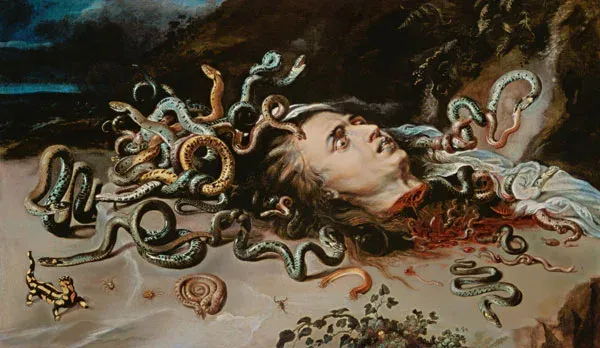Head of Medusa
“Head of Medusa” by Peter Paul Rubens: A Masterpiece of Mythology and Baroque Realism
Introduction
“Head of Medusa” is a painting by the renowned Flemish painter Peter Paul Rubens, created in 1617-1618. The work is a powerful and dramatic representation of the myth of Medusa, a figure from Greek mythology with snakes for hair and a petrifying gaze. Rubens, known for his Baroque style and mastery in dealing with mythological themes, creates a unique interpretation of this mythic episode.
Description of the Work
Rubens’ “Head of Medusa” depicts the decapitated head of Medusa placed on a rocky outcrop in a landscape. The snakes composing Medusa’s mane are portrayed in detailed and realistic manner, winding sinuously and menacingly. The vacant gaze of the decapitated head adds an element of horror to the work, capturing the moment after the decapitation.
Symbolic Interpretation
The painting not only captures the cruelty of the myth of Medusa but can also be interpreted symbolically. The head of Medusa, with its petrifying gaze, may represent the destructive force and fragility of human beings in the face of death and the power of the gods.
Rubens’ Baroque Style
Rubens, one of the leading exponents of Flemish Baroque, uses a palette of vibrant colors and pronounced chiaroscuro in the painting to create a dramatic effect. The detailed rendering of the snakes and the strong light emphasize the three-dimensionality of the work, immersing the viewer in an intense visual experience.
In Conclusion
The painting by Peter Paul Rubens remains an extraordinary example of how art can transform ancient myths into powerful and evocative visual works. Rubens’ skill in capturing the mythological essence with a realistic touch makes this work a lasting testament to his artistic genius.







